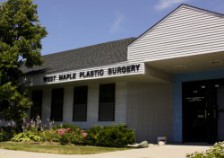Understanding How Skin Resurfacing Works
For many who suffer from scars or wrinkles on various parts of their body, including the face, Skin Resurfacing is often one of the best options to remediate this issue. With this procedure, there are a variety of techniques and options that may vary depending on your unique needs and cosmetic profile. By learning more about the procedure, determining the best option for your needs should be achievable in no time at all. Ablative Versus Non-ablative There are two general types of skin resurfacing available. Ablative, which removes the upper layer of skin by burning through the dermal layer to the epidermis, requires a longer recovery time and is more invasive than non-ablative. Non-ablative, which bypasses the skin surface and focuses in on tissue below, requires less recovery time. In general ablative tends to product more effective and long lasting results than non-ablative, but this isn’t always the case. Since skin resurfacing intentionally damages layers of the skin, it is essential to avoid sunlight after treatment until full healing has occurred. Failing to do so may result in unsightly scars. Make sure to wear a full spectrum sunscreen during this period of time for additional protection. According to Web MD, “You will also probably notice that your skin is lighter for a while after surgery. It is particularly important that you use a “broad-spectrum” sunscreen, which screens ultraviolet B and ultraviolet A rays, to protect your skin during that time. When selecting a sunscreen, look for one specially formulated for use on the face with a sun protection factor (SPF) of 30 or higher.” Avoid going outside during periods of intense sunlight and wear a wide brimmed hat to shadow the face. Be sure to contact us at West Maple Plastic Surgery if you have any questions about how skin resurfacing...
Read More

